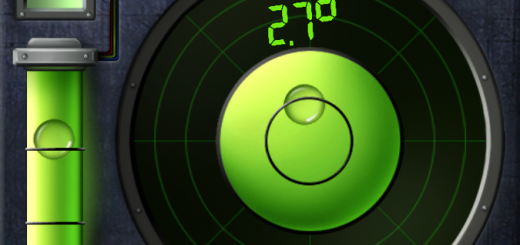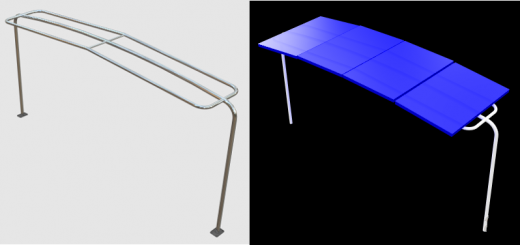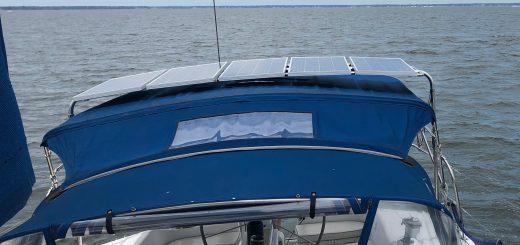A Case for a Composting Toilet – 3 Season Update at Bottom of Post
The waste tank for my forward head lived under the bunk in the Pullman cabin. The tank was original and I suspect the hoses were too, making the whole system over 20 years old. I knew for sure that the hoses were permeated and gave off that lovely boat waste smell, right into the mattress where I tried to sleep. I could hardly stand it and my wife, who has a much keener sense of smell, couldn’t stand it at all. So last fall, I started planning the rip and replace project to get new hoses. While I was researching hoses and the costs associated with those, I went down a rabbit hole on composting toilets.
Composting toilets separate liquid urine from the solid waste, storing liquids in a tank and solids in a composting chamber. The solids are mixed with composting material, and bacteria do the job of reducing the solids to a rather innocuous material that smells like rich dirt. Practical Sailor Magazine (Composting Marine Heads) did a nice piece a few years ago that is still up on their website that explains the process much better than I can plus includes some real world testing.
Besides the smells associated with the holding tank system, the other thing I hated was getting pump outs. When I asked other C42 owners about experience with composting toilets, instead of answering the ask, everyone chimed in with how easy pump outs are for them. It isn’t that I hate the pump out itself, no big deal there, it has to do with my particular marina. Let’s just say they aren’t very customer focused. There is a pump out station by the fuel dock, but for several months last year it didn’t even function. As far as boat-side service, forget it. So to get my tank pumped, I and my mate have to drive an hour to the marina, spend a good 30 mins getting set up to move the boat over to the pump out station, then reverse the process. Add to that the limited operating hours of the marina (not a self service pump), need to go when the tide isn’t ripping through the channel on which the dock resides, and the limitation of docking perpendicular on the end of the dock to avoid getting pinned to the dock by the current. Between the 3 1/2 hours required to actually get a pump out and all the constraints, performing the operation was a stressful and unpleasant ordeal. I thought, if I put in a composting toilet, I can get rid of the tank and the hoses and the need to pump out. Granted, the cost for a composting toilet would be more than just replacing the hoses, but the benefit would be greater, at least in my book.
I did a little research, the usual web surfing, found articles and reviews, visited manufacturer sites, and eventually settled on an Air Head. The only thing I was puzzled by was how I would fit it into the forward head. The existing toilet sat upon a molded-in step. If I put the Air Head on that step it would raise the seat to an uncomfortable height. I knew I had plenty of space for the new toilet, but this height problem nagged at me for a long while. I even went so far as to build a life sized mock up in cardboard to test the feel of the predicted height. I saw where others made a step to rest your feet on and was planning to do that. This was in the January time frame with plenty of time before the sailing season. Convinced that I’d be able to make it work, even without the final solution settled, I placed my order and spent that boat buck. While waiting the then 10-12 weeks time ship because COVID 19 was in full swing, I waited for a break in the winter weather to do the rip part of the rip and replace. I got many breaks, but life got in the way (kitchen renovation) and I didn’t get to start until nearly the end of April. I won’t go into the gory details, but it did entail lots of cutting up old hoses and the expected waste spillage. Luckily that latter was contained and did not find its way into the bilge. I brought the hoses, waste tank, and toilet home and temporarily set them all by the garage. The next day I was sitting on my deck, a good 20 feet from the collection, and I could smell that smell; that smell that greeted me every time I went into my bunk. It wasn’t just the hoses that reeked, the tank was also permeated and the smell was coming off of it as well, right up into where I was trying to sleep. Even if I had replaced the hoses, the smell would have remained.
Installation
The head finally arrived and I had to decide on how to fix the height problem. As I read through the manual I came across the idea of a platform. This would be a much simpler solution rather than the complicated build of a step that would have to fit exactly under the front of the toilet liquid tank and would probably require multiple trips to the marina to get right. I made the platform with a piece of 3/4” plywood I had laying around in the garage, rounding corners with my jig saw, rounding edges with my router, and applying multiple coats of paint to seal it. I fitted all the mounting hardware to the platform while working in the garage prior to the installation. I determined all the mounting bolt locations after I got to the boat, drilled the holes, and bolted everything in place. Here are a couple of photos of it mounted in place.
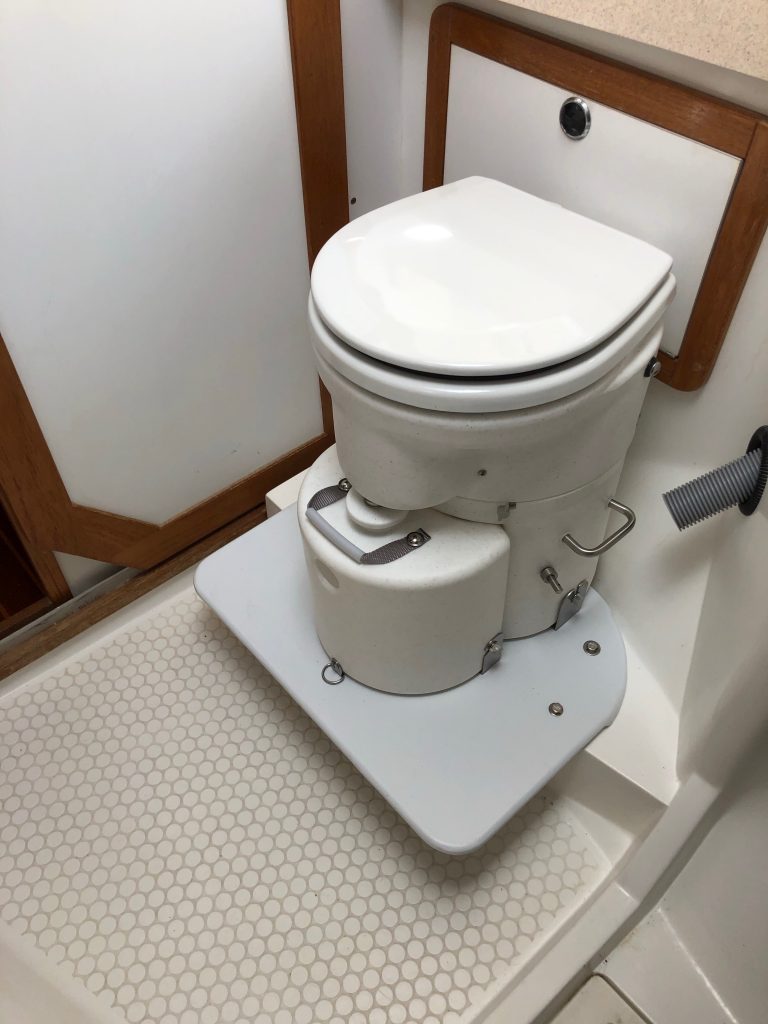
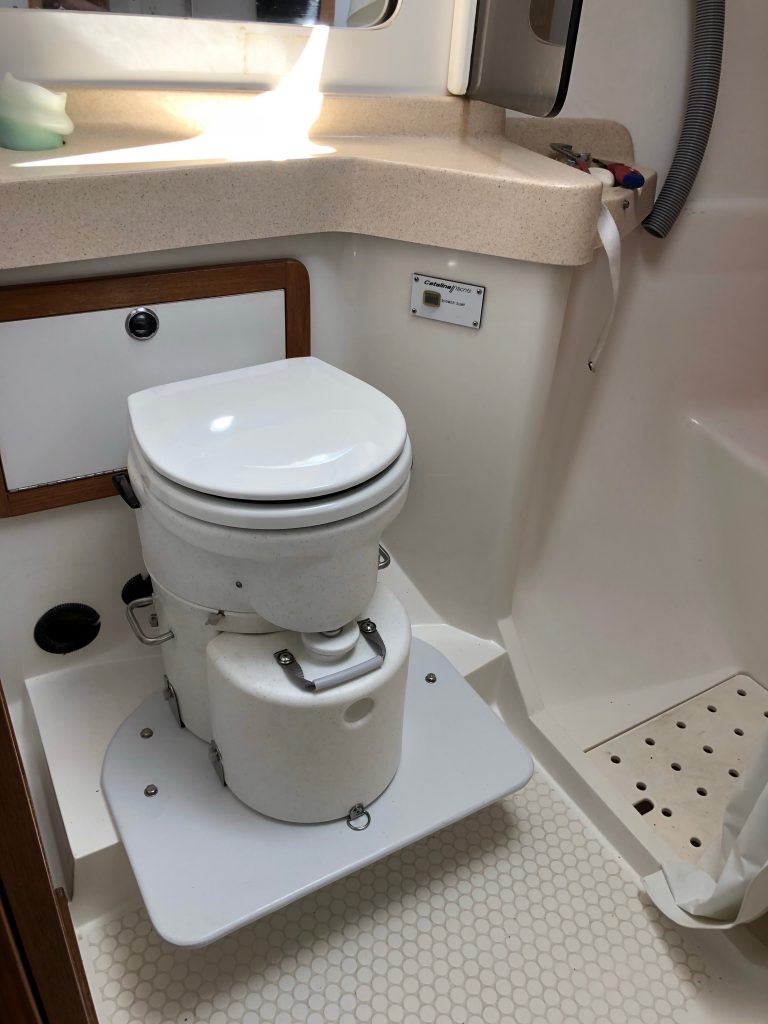
The AirHead requires a vent hose and fan to pull air through the solids tank to help with the composting process. You can see the vent hose in the picture above. Yes, it is supposed to actually be connected to the toilet, but I hadn’t got that far yet when I took the pictures. The hose has to be vented outside of the boat, so a fairly large hole must be drilled in either your deck or, in my case, the anchor locker. Many folks will take the hose straight up to the ceiling of the head, but I was lucky in that the head is in the bow and there was easy access to the aft end of the anchor locker. The AirHead comes with a length of hose, a fan, and the mounting enclosure for the fan. You specify if it will be straight or a 90 degree fitting. If you are going through the deck, you’ll need a deck vent on top to keep the water out. For my installation, I installed a simple cowl to keep the deck wash spray off the fan when I clean the mud off the anchor chain. I also had to order extra vent hose due to the extra long run from the head to the fan. Below are a couple photos of the fan enclosure install in the anchor locker.

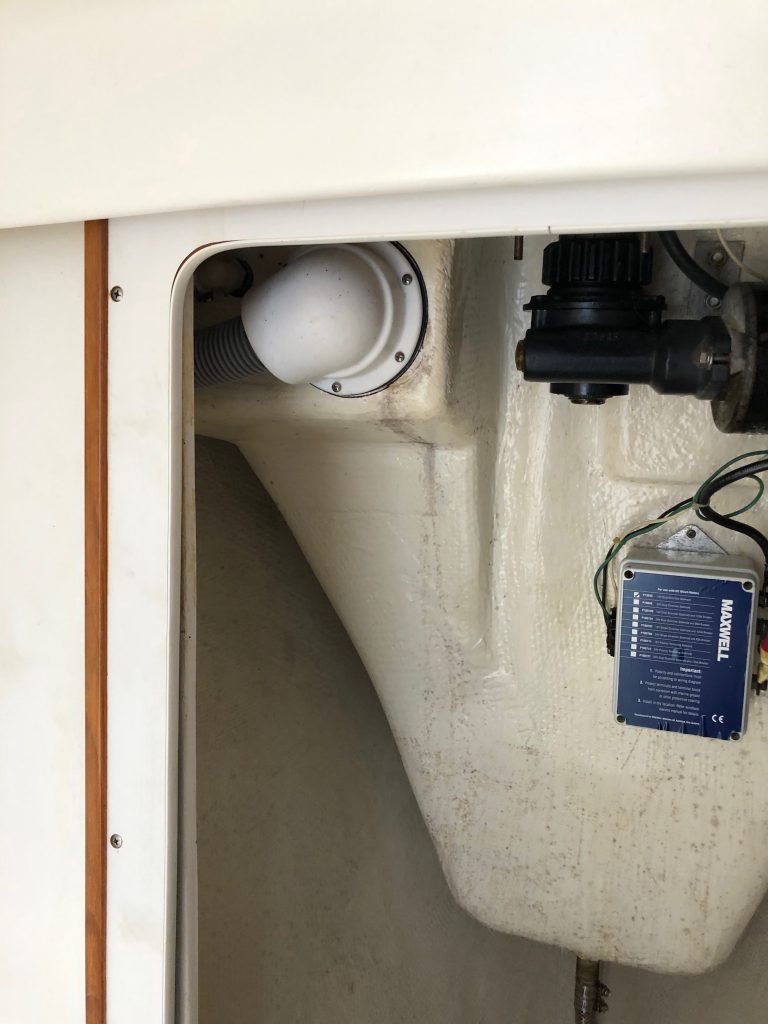
The fan requires constant 12v power. It is an extremely low amperage draw but if left on a battery with no charging source, it will suck it dry eventually. I keep Kestrel plugged into the dock with the charger on when Kestrel is not in use. When I’m sailing, I turn on the solar power system. I recently had her hauled and was off dock power for about 3 weeks. I just left solar on the whole time and that kept the batteries topped off just fine. The wire run from the fan all the way back to the electrical panel was rather long, but Catalina makes it pretty simple to get wiring down the length of the C42 Mk II. All along the length of the boat are removable panels on the underside of the side decks where cables and hoses are run. Because of the low amp draw, I went with a 18 gauge wire.
Actual Use
My intention for this past summer was to spend a lot more weekends overnighting on Kestrel and really give this new head a workout. Everyone knows the deal with plans and all, so I’ll just say that work got in the way. Not to say that I didn’t get out, we just didn’t get out as much as I wanted to. Looking back at my log I see 13 days on the boat either sailing, staying at the dock, or at anchor.
First thing to know is that the waste in a composting toilet doesn’t magically disappear. The the solids compositing chamber can hold a lot of uses, but it does have to be emptied eventually. The manufacturer of the AirHead claims that it can handle an entire season for a couple cruising weekends or a month for a live-aboard couple. Peering into the chamber last week, I see there is still plenty of capacity left. Even it if we were to double our boat time, I think we’d still have room to spare.
The liquids tank is a different matter. The two gallon capacity is about enough for 24 hours or so for a couple. That means carrying empty jugs for storage, the unpleasant job of transferring the liquids to the jugs once a day, and the other unpleasant job of emptying the jugs when access to proper facilities is available. This alone might be enough to drop this type of toilet from many people’s consideration. After cleaning up after four kids and various cats and dogs, the job doesn’t really bother me. The trick is to do the transfer outside of the cabin, either on a swim platform or in the cockpit as the liquid can get a little pungent. It would also be difficult to empty the tank in any kind of rough boat motion.
Despite the drawbacks, installing a composting toilet has been a net positive for us so far. The smell from the old hoses and tank is gone. Not to say there isn’t the smell of a 20 year old boat, but the waste smell is gone. I can sleep in my bunk without choking. Also, there is none of the smell associated with the waste tank vent. You know, where you have to warn folks to beware of the green cloud that is crawling down the side of the boat after flushing. And the much hated trip to the pump out station has been eliminated.
Update – 3 Seasons Later
Given the type of use we make of Kestrel, long weekends at anchor, I have to say that I’ve been pleased with having a composting toilet onboard. The drawbacks are far outweighed by the benefits. I haven’t had to do a pump-out in three years, and I still don’t have any noticeable odor. The downside is that I have to empty the liquids-tank once a day and then cart those jugs home to empty. I repurpose old water jugs for this. We did have one incident where liquids got into the solids tank and fired off a smelly biological reaction which required emptying of the solids tank at the end of the trip. Truthfully, it was time to empty it anyway and this was only a minor inconvenience. If there were more than two of us and we stayed out longer, I’d have to figure a way to deal with the liquids differently, but there aren’t and we don’t so this works for us.

